Shadow of fear hangs over Kangaroo Island this fire season as locals rebuild dozens of destroyed homes
Carol Houston’s daughter hunted for days through the wreckage of her parents’ Kangaroo Island home for her mother’s ring. Incredibly, she found it.
SA News
Don't miss out on the headlines from SA News. Followed categories will be added to My News.
When fire ripped through Paul and Carol Houston’s Stokes Bay property, an engagement ring resurrected from the ashes was among the glimmers of hope left in its wake.
The couple evacuated their Pratt Road home ahead of the devastating fire that tore through the area on January 3 last year, razing homes, killing livestock – and leaving years of recovery work to come.
After Mrs Houston realised she had left her engagement ring at home when she went to Kingscote, daughter Elizabeth searched the debris high and low, eventually finding it.
“For a few days, she was hunting for it,” Mrs Houston says. “I had put it on a little glass ring holder and the glass was melted all around it.”
Along with their home, they lost three sheds, most of their fencing and their treasured garden.
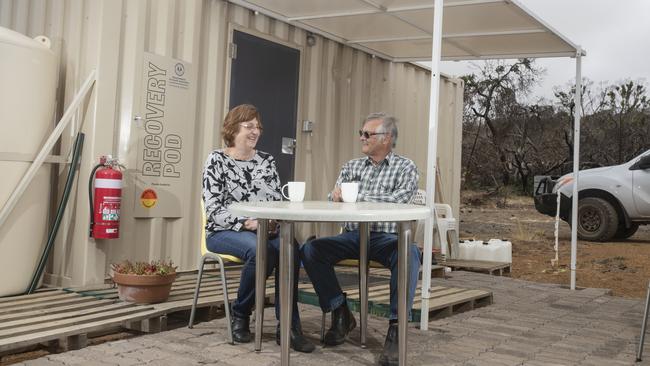
But one of Mr Houston’s favourite trees, a claret ash, is showing signs of fighting back, sending up a shoot from its base and bringing hope that it will recover. Their cattle also survived the blaze.
“It would have been very traumatic for the animals because there would have been lots of embers and the wind was just incredible,” Mrs Houston says.
Mr Houston recalls returning home from Kingscote after the fire had flattened the house they had shared for 26 years.
“It seemed unlikely that the fire could travel at that rate but it just stormed through,” he says. “It was pretty raw. It was an immediate direct impact.”
The couple spent about six months living in rented accommodation in Kingscote, but they were itching to get back home for calving season.
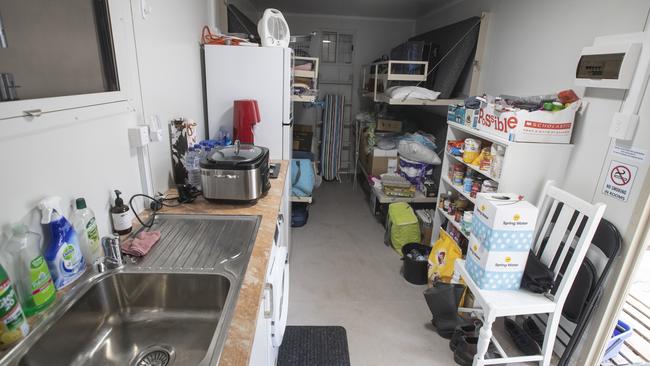
Mr Houston, who drives a school bus, was travelling more than 2000km a fortnight, so they were also eager to cut back on time going to and from their property.
They bought a caravan and erected two sheds. An accommodation pod, provided by the Minderoo Foundation, has also allowed the couple to live on-site while they wait for their new home to take shape.
“If it was a smaller van, I think we would have been sick of it, but it’s home while we’re here and I’m quite content,” Mr Houston said.
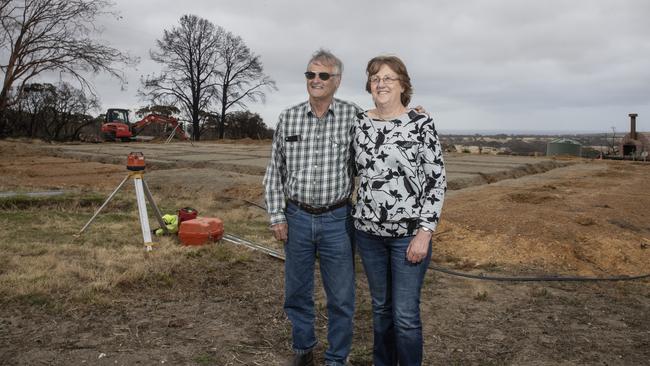
Shadow of fear hangs over KI this fire season
As homes are rebuilt and tourists head back over Backstairs Passage, Kangaroo Island’s mayor says the region will be “on a wing and a prayer all summer” following the devastating fires of 12 months ago.
Michael Pengilly says the community has been on edge this season after the blazes that wreaked havoc in December and January and weren’t officially declared safe until February 6.
“We suffered so horrendously last summer that everyone is a bit nervous about it,” he said.
“There’s a lot of conservation land that hasn’t been burnt and there haven’t been enough cool burns (burn-offs).
“I don’t think it’s going too far to say that we’ll be on a wing and a prayer all summer.”
The inferno killed renowned bush pilot Dick Lang and his son, Dr Clayton Lang, destroyed 87 homes and hundreds of outbuildings and significantly damaged another 32 houses. It burnt 211,000ha of scrub and killed 60,000 stock animals.
The Kangaroo Island Council has approved 27 applications for house rebuilds. Four are complete and at least eight more are being constructed.
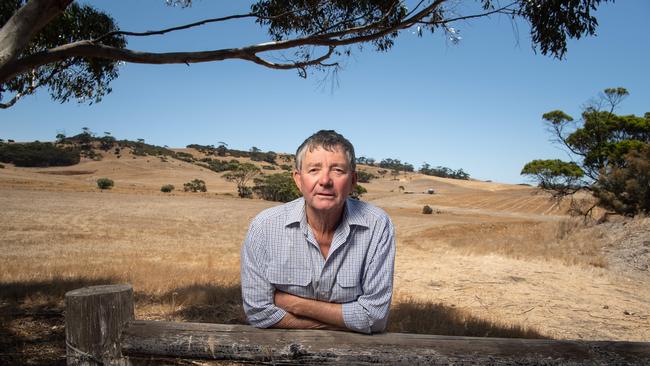
Mr Pengilly says 20 of the homes the fire razed were in plantations and will never be rebuilt.
“Some families have decided that mum and the kids, in particular, don’t want to be back on the farm – they’d rather be in town where they feel safer,” he said.
A mayoral fund set up to help victims has so far distributed about $4.5m.
The State Government’s SA Bushfire Appeal gifted more than 1200 payments totalling $3.7m to people affected by the Kangaroo Island blazes.
A package of other grants were also allocated, including $11m to primary producers, and about $5m to small businesses that lost income or needed to rebuild.
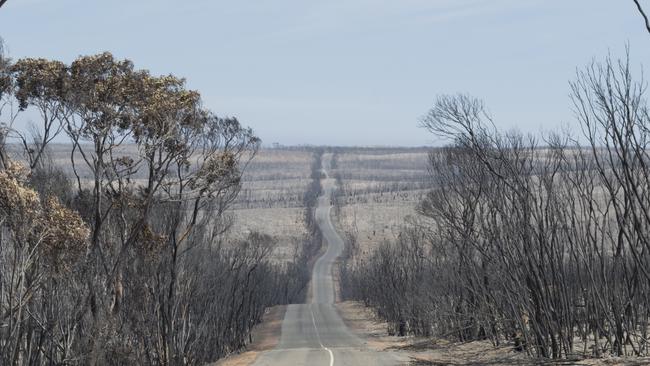
Battered and weary from more than a month of firefighting, Islanders welcomed an army of volunteers who flooded in to clear debris, repair fences, euthanise livestock and provide other services such as healthcare and animal husbandry. But the efforts of organisations such as BlazeAid were hampered by COVID-19 travel restrictions forcing volunteers had to wrap up early.
Greg Stevens, who established the camp at Parndana, said it was one of the biggest BlazeAid had ever had, with 788 volunteers contributing.
“Seeing a brand new, straight fence at the end of a job is very rewarding, but the smiles of the property owners and their profuse gratitude is what makes volunteers keep working,” he said.
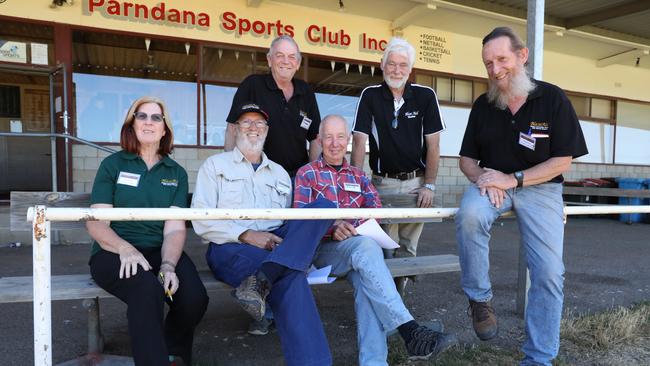
“We know we really do make a big contribution to lifting them from despair.”
Among the army of volunteers was Disaster Relief Australia (previously Team Rubicon). A second deployment during November was cut short to get members home before the lockdown began.
Chief development officer Anastasia Bougesis said 43 veterans helped in February, March and November, doing manual labour tasks. She said the volunteers dealt with a lot of grief and their visits gave property owners a chance to tell their stories. The organisation plans to return early this year.
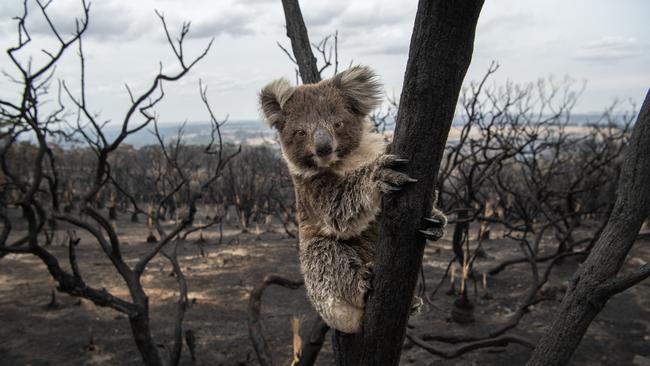
Bushfire recovery co-ordinator Rob Manton said some farmers were rebuilding their businesses before their homes.
“It’s something that military personnel are quite good at because they know how to have difficult conversations,” Ms Bougesis said.
“We look at a big task that we have and think it’s insurmountable, but as soon as someone comes to help you and start to lighten the loads everything seems more achievable and people get a sense of hope that people are there and can shoulder a bit of the burden for them.”
“This is not a short-term rebuild – it’ll be a couple of years in the making because of the water gap and the availability of tradespeople on the island, who are flat-strap,” he said.
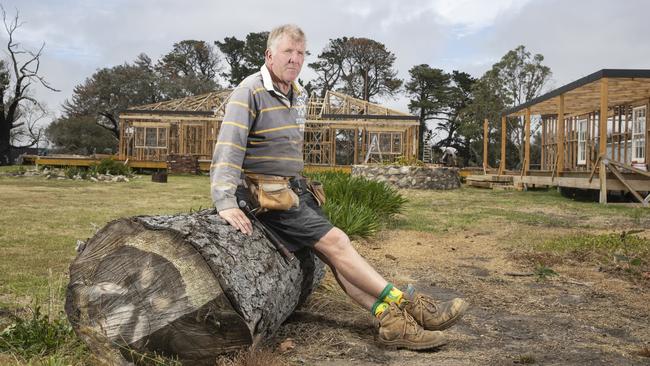
WOODWORKER JONNY CHIPS AWAY
Every swing of the hammer is cathartic for Jonny Gloyne.
His Roo Lagoon homestead and the adjacent woodworking shop and gallery were destroyed by the “ultimate crown fire” last January. Now he’s rebuilding them in the hope of hosting tourists again by next Christmas.
“It moved 20km in the time that it took me to drink a stubby,” Mr Gloyne says of the inferno that raced across the region, burning through almost half of Kangaroo Island.
“It was just ripping across the land, and 1000 Elvises (water bombers) wouldn’t have put it out. It was a big blowtorch across the land.”
Mr Gloyne fled the property in his Holden Premier sedan, driving through what he describes as a “wall of flame” and then waiting it out at the Western Districts Community and Sports Club.
His home, on the same property at Gosse, was also fire-damaged but not destroyed. He has since replaced its walls and roof, reworked the interior layout and added a new veranda and decking.
But Mr Gloyne is looking forward to welcoming tourists back to the homestead and his workshop, where he made items such as salt and pepper mills, bowls, barometers, clocks and lazy Susans.
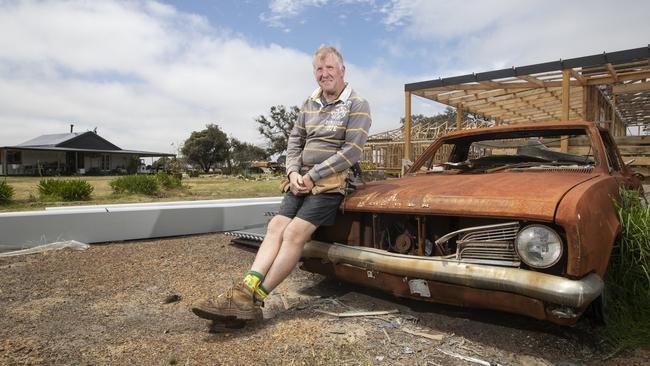
With experience in construction, he has been able to put those skills to work on the property, providing personal satisfaction as the island grapples with the huge task of rebuilding what it has lost.
“If I wasn’t rebuilding, I’d probably be going a bit stupid,” Mr Gloyne says.
“It’s good therapy to keep your mind off what’s happened. It’s going to have a really unique feel about this place when it’s finished. It’s had plenty of love put into it. It’s going to rock.”
Both new buildings are taking shape and he hopes to have them finished by December.
Several bushfires have already burnt on the island this summer, and Mr Gloyne says that has created anxiety following the hellfire locals faced last season.
The bushfire threat, though, never made him think twice about rebuilding in the same spot, and he says burn-offs and clearance work will help stop history repeating at his property. He wishes he could say the same for the conservation areas on the island’s western end, including Flinders Chase, which was virtually destroyed in the inferno.
“I’m still looking forward to seeing some sort of evidence of a change in fuel-load management with the heavy dense parts of parks,” he says.
“It’s the only thing that’s needed on this island and the rest of the nation.
“If you’re going to allow people to move into the scrub, you have to have some sort of program … without all the red tape.”


